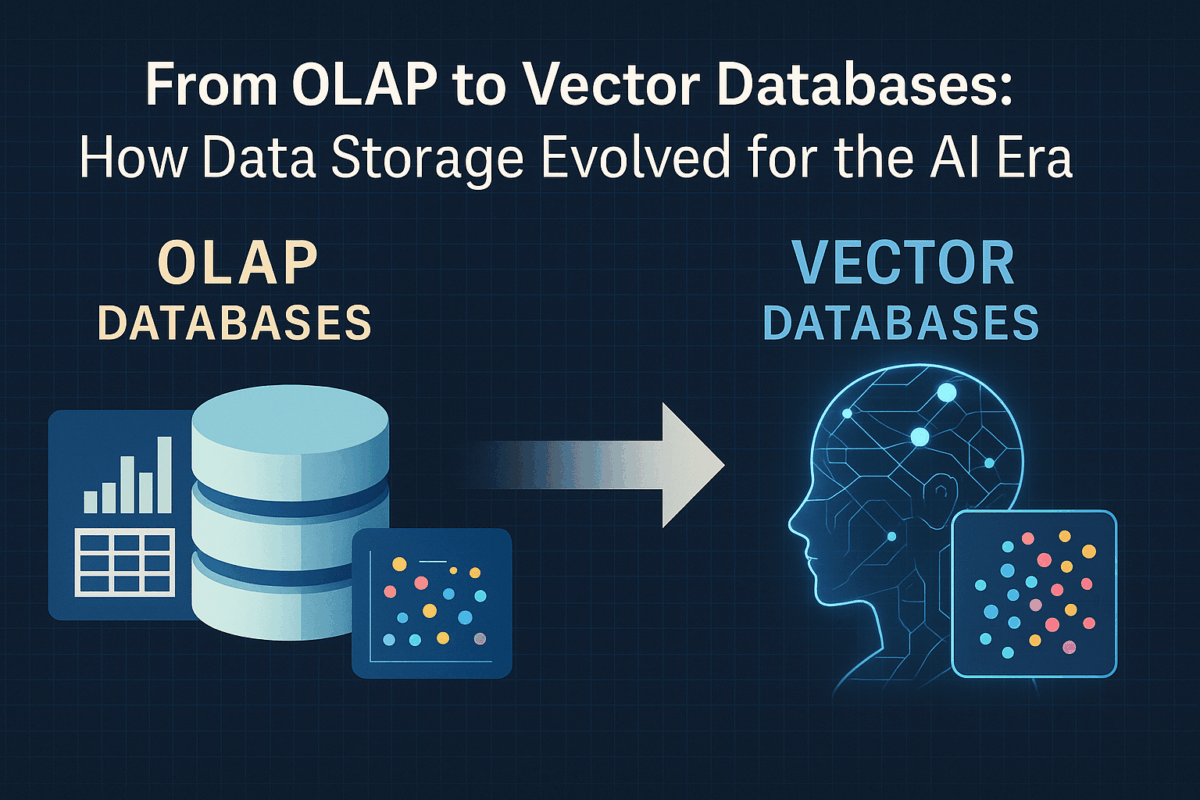For decades, if you wanted answers from your mountain of business data, you went to an OLAP database. It was the workhorse behind every sales dashboard, boardroom chart, and “how the hell are we doing this quarter?” meeting. But if you’ve been paying attention, you know the world changed—and so did our data. Enter the era of vector databases, and suddenly the old rules don’t apply.
Let’s talk about how we got here, why it matters, and why the old-timers and the AI whiz kids are finally attending the same party (and maybe even dancing together).
The Old Guard: OLAP Databases
OLAP (Online Analytical Processing) databases were designed to slice, dice, and julienne structured data. Think: numbers, categories, timestamps—data that fits in nice, neat boxes. If you wanted to know last month’s revenue in the Midwest, OLAP was your answer. SQL queries, multi-dimensional cubes, and performance tuned for aggregations: these were the tools of the trade.
-
Strengths: Lightning-fast aggregations, perfect for reports and business intelligence.
-
Weaknesses: Rigid schemas, not a fan of messy or unstructured data, can’t answer “show me things like this” (unless “like” means “exactly the same”).
Bottom line: OLAP helped companies understand what happened and where the money went. It’s still the backbone of serious analytics—but it doesn’t “get” modern data or AI-driven needs.
The New Wave: Vector Databases
Vector databases are the new kids with the cool haircuts and the AI-generated playlists. Instead of rows and columns, they store vector embeddings—high-dimensional representations of text, images, audio, and more, generated by machine learning models.
Why does that matter? Because vectors let you search and compare data by meaning, not just by value. Now you can ask:
-
“Show me all contracts that are similar to this one—even if the language is totally different.”
-
“Find products like this shirt (even if the description doesn’t match).”
-
“Which customer tickets feel like this new complaint?”
How do they do it?
They use AI to translate messy, unstructured data into numbers—a vector—then use math (specifically, “nearest neighbor search”) to find what’s semantically similar.
-
Strengths: Handles unstructured data, powers semantic search and recommendations, enables AI to “remember” and “understand.”
-
Weaknesses: Not built for aggregations or classic SQL analytics. You need AI models to generate the vectors.
Bottom line: Vector databases answer questions we couldn’t even ask before—helping us find what’s similar, what’s related, and what’s relevant in an avalanche of digital noise.
How Did We Get Here?
Back when “big data” meant a terabyte and AI was a sci-fi buzzword, structured data ruled. But now? Data is messy, multi-modal, and growing by the petabyte. We want more than “what happened.” We want “what does it mean?” and “what should I do next?”
-
OLAP is about summarizing the past.
-
Vector DBs are about understanding the now (and predicting the future).
And as the tech world loves to do, we’re not picking one or the other—we’re building systems that use both. Think dashboards powered by OLAP, and recommendation engines or AI copilots powered by vectors.
Real-World Example:
Old School:
“Show me quarterly sales by region.”
OLAP crunches the numbers and spits out a chart.
New School:
“Find all support tickets about login issues, even if they don’t use the word ‘login’.”
Vector DB finds them by meaning, not keywords.
The Bottom Line: It’s Not Either/Or Anymore
If your goal is to track sales, OLAP is still your best friend. If you want your AI chatbot to actually understand what users are asking (instead of just matching keywords), you need a vector database.
The future is hybrid.
The real winners will be the companies who use both—combining hard numbers with soft meaning, old-school analytics with new-school intelligence.
And if you’re not already thinking about how vectors and OLAP can work together in your stack? Well, let’s just say you might want to update your playlist.



